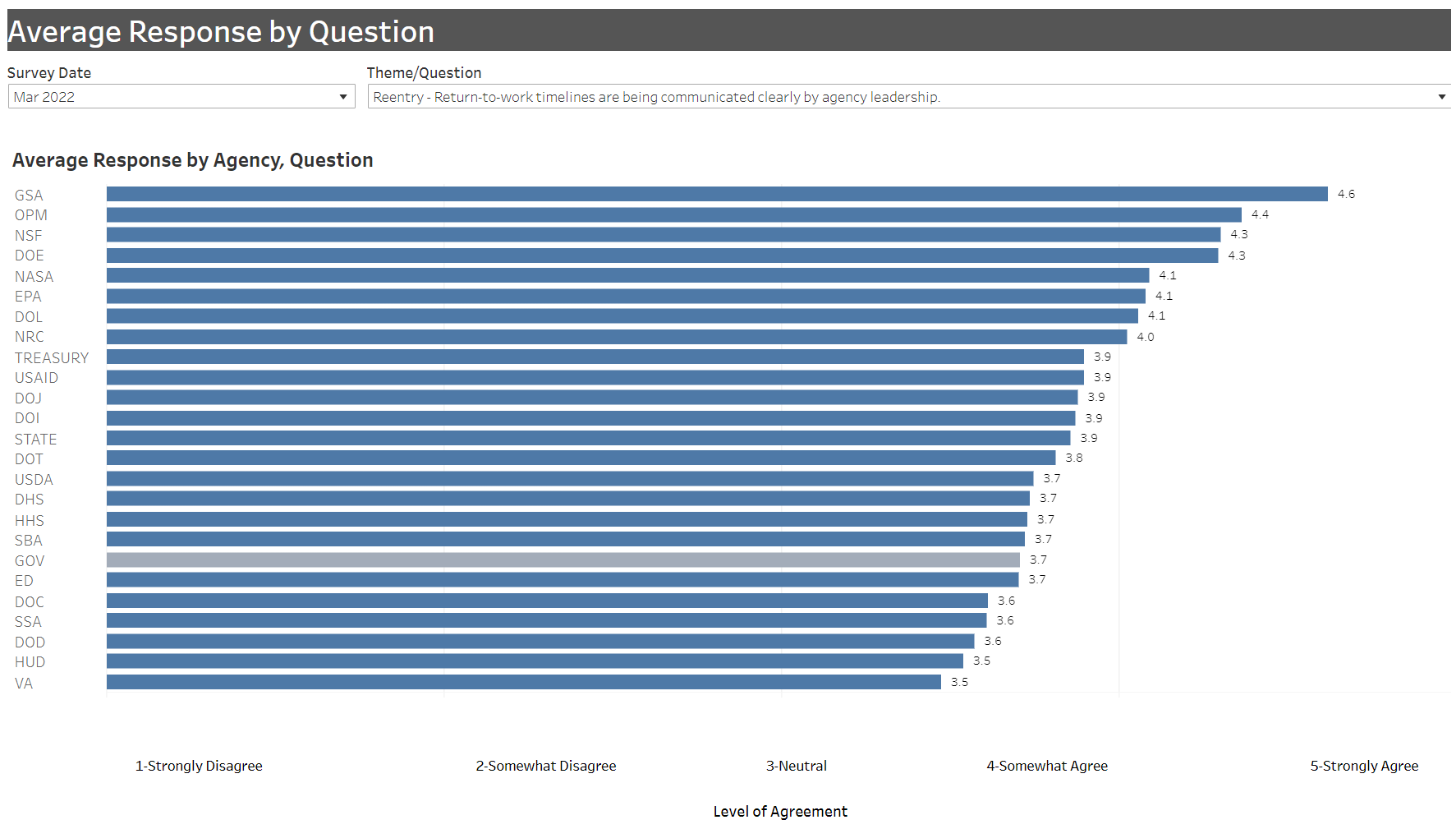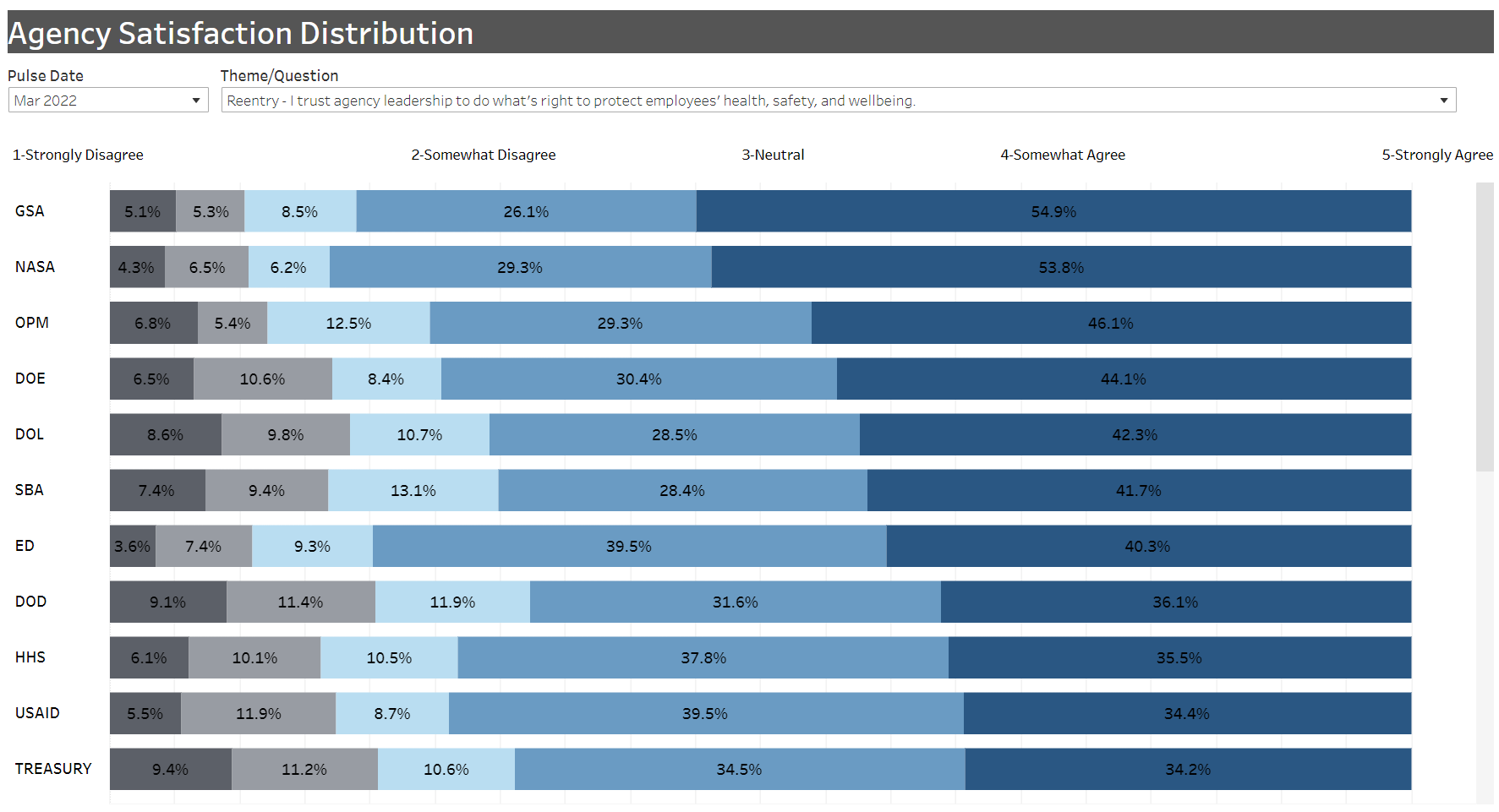Exclusive
GSA sees positive feedback on reentry, but deputy administrator says there’s ‘still a lot to learn’
In an effort to boost employee satisfaction and engagement, GSA Deputy Administrator Katy Kale encourages a strong “feedback loop” for the agency’s workforce.
At the General Services Administration, Deputy Administrator Katy Kale often grabs a cup of coffee, sits down at her computer and starts a virtual get-together with a small group of employees.
In those “coffee chats,” workers can ask questions to, and get answers from, leadership about the workplace, but more importantly, they have the opportunity to point out potential emerging issues, Kale said.
“A lot of really interesting things have come out of those conversations, including how we’re ensuring accessibility and equity in this new hybrid way of working,” Kale said in an exclusive interview with Federal News Network. “The way that we’ve worked over the last two years and the way that we worked before didn’t always work for everyone.”
For the agency, which received some of the most positive feedback from the third round of governmentwide pulse surveys, the quick turnaround on data helps make more informed decisions for things like adjusting the focus of agency management and shifting finances.
“It’s really valuable to have data sooner rather than later to be able to use that data to evaluate decisions that are being made at that time,” she said.
It’s not just about the results, though, Kale said. It’s about the number of employees who took the time to respond. By maintaining a “feedback loop” — making changes based on employees’ input, then letting them know the steps the agency has taken — Kale said she hopes to continue encouraging responses.
Along with quick feedback from pulse surveys, results from the 2021 Federal Employee Viewpoint Survey help agency management make better informed decisions, Kale said. It boils down to showing your employees that you are listening and taking steps to respond to their input.
“It really is important to then get back and say, ‘here are the results, we want you to check them out. These are the things that we were excited about and what we found interesting,’” Kale said “Hopefully then they see the results or the decisions that are coming out of the feedback we’re receiving. We want to make sure that we’re always highlighting that as well.”
The results of that feedback loop show up in the third round pulse survey results, which the Office of Management and Budget released on April 28. GSA had one of the highest response rates, with 39.8% of employees taking the survey, second only to the Nuclear Regulatory Commission. In comparison, GSA’s response rates were 45.4% for round one and 45.5% for round two.
“That engagement and wanting to provide that feedback, regardless of what we may have seen, was something that I was very excited about,” Kale said.
GSA sees positive feedback on reentry
When GSA’s reentry plans were put on hold during the spike of the Omicron variant of COVID-19, agency management did not have an exact answer for when reentry would resume, but Kale said being direct with employees was most important.
“Honestly, sometimes when you don’t know the answer to something, it’s a little bit uncomfortable,” Kale said. “But the benefit of being able to do that and having that conversation really does outweigh the potential discomfort.”
Focusing on transparency and honesty when communicating with GSA employees, particularly when it comes to updates on reentry plans, helps build trust, Kale said.
GSA saw the results of those communication efforts reflected in the pulse survey data. The agency received strong positive feedback from its employees on questions about reentry plans.
For example, on a scale of one to five, with five being the highest, GSA scored highest of any agency when the survey asked respondents if agency leaders are clearly communicating return to office timelines. That comes out to 92.6% of GSA employees giving positive responses.

When the pulse survey asked about their thoughts on reentry plans, 81% of GSA respondents said they trusted agency leadership to do what’s right to protect employees’ health, safety and well-being. The agency had one of the highest scores for that survey question.

Despite positive scores, the pulse surveys show there is still a lot of work to do, Kale said.
“Irrespective of the score, it showed us that we still have a lot to learn. We still have a lot to do as we’re navigating this new work environment. Even though we may have done well on scores, I really want to stress that there is a lot of work still ahead,” she said.
Promoting equity in retention efforts
A lot of that work centers on advancing diversity, equity, inclusion and accessibility.
Kale said the agency holds town halls where employees can offer input and ask questions. Additionally, she meets with employees from key groups such as special emphasis programs and affinity groups.
Partly based on those conversations, GSA in the last year has started two new focus groups: one for people with disabilities and another for Asian American and Pacific Islander communities.
The creation of those two groups also in part led to the first GSA town hall meeting that had an American Sign Language interpreter, as well as closed captioning, Kale said.
Advancing equity is also part of GSA’s strategic plan for 2022 through 2026. The agency plans to update its hiring process, employee performance management and workforce engagement to promote governmentwide diversity, equity, inclusion and accessibility goals, the plan stated.
“When it comes to hiring and especially retention, you want to make sure that you’re building a culture where everyone can feel like they are engaged, that they’re contributing to the mission of the agency and that their work is valued,” Kale said. “In the way that we were working prior to the pandemic and during the pandemic, not everybody felt that the way that we were working benefited them. We’re seeing a lot of really good outcomes from people being able to work in this hybrid way where they feel like they are seen in a different way.”
Copyright © 2025 Federal News Network. All rights reserved. This website is not intended for users located within the European Economic Area.
Drew Friedman is a workforce, pay and benefits reporter for Federal News Network.
Follow @dfriedmanWFED






